Stockholm Syndrome Pt. Un: Pay To Win
“No Fucking Thanks!” “It’s a scam.” “Greedy developers are just trying to ruin the game!” If none of this sounds familiar to than you likely haven’t spent any time checking in on the general sentiment of gamers as it relates to crypto and NFTs.
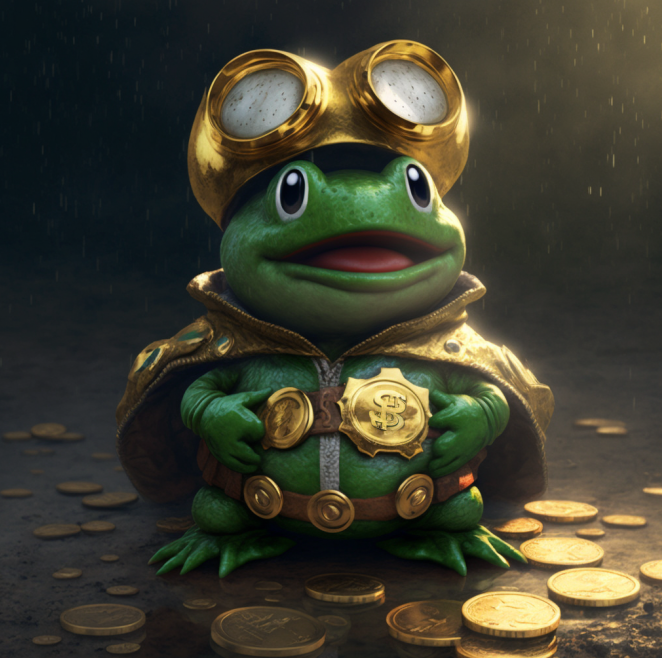
(OpenSea/Gioluca/Cryproken317/SappatelliART)
“No Fucking Thanks!”
“It’s a scam.”
“Greedy developers are just trying to ruin the game!”
If none of this sounds familiar to than you likely haven’t spent any time checking in on the general sentiment of gamers as it relates to crypto and NFTs. Despite what this author feels is a perfect product market fit in may (but certainly not all) cases, gamers largely seem to believe its all just another scam from their favorite studios to extract even more money from their wallets. And on one hand it’s hard to blame them. Just look at the legacy of the so called “Free-to-Play” gaming shift. Gamers have been held hostage for well over a decade and bled dry in very calculated ways via downloadable content, loot boxes, microtransactions and subscriptions.
While gamers fear the introduction of crypto and NFTs into games will fully focus developers on profit they are missing the forest through the trees. Publishers are already profit maximalists and gamers are already the product. There’s no guarantee that Web3 gaming can or will solve all that is wrong with the gaming industry, but it does present an opportunity to find a new path — one that has the potential to better balance the power between gamers and publishers. Before we examine how blockchains and crypto assets can have a positive impact on gaming economics we must first understand how the current system “works”.
Get The Fuck Outta My Building
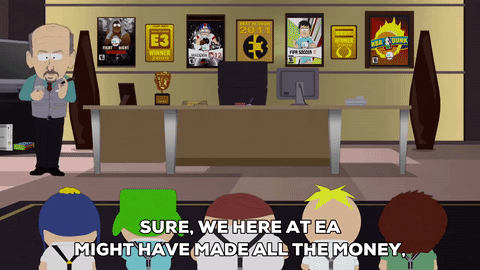
The global video game market is massive. We’re talking nearly 200 billion dollars in revenue in 2021 massive — with expectations of that increasing by around 25% by 2025. The growth has been fueled largely by the explosion in mobile gaming over the past decade. Today, mobile gaming revenue makes up over 50% of total global gaming revenue per annum — and it’s increasing.
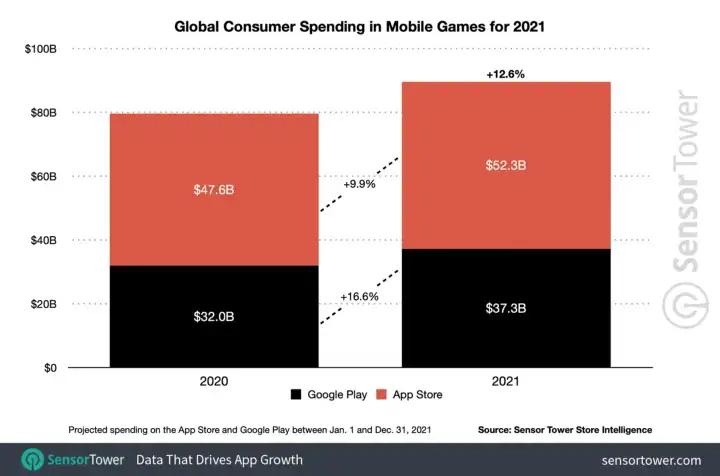
The goldmine that is mobile gaming is build largely on the “Free-to-Play” model, which commonly translates into “Pay-to-Win”. “Free-to-Play” games make their money by hooking players into the game early and extracting value over time with in-app purchases for digital resources or leveraging season type subscriptions for faster progression. If you look at the top grossing mobile games from 2021 across both the Apple App Store and Google Play they are all “Free-to-Play”.
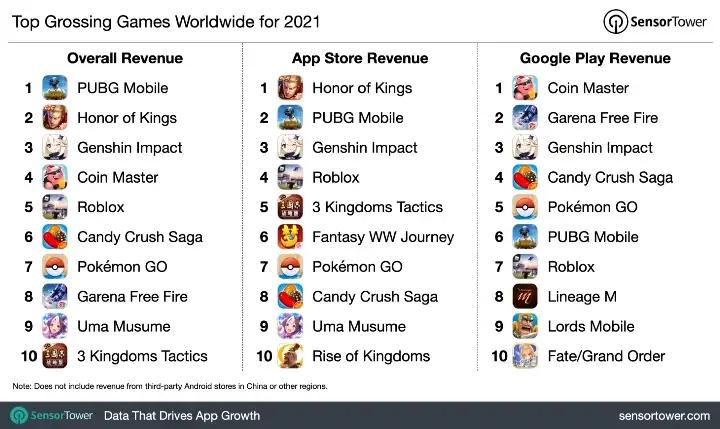
But mobile isn’t the only segment of the market looking to bleed players dry. PC and console games have begun to master the art of leveraging loot boxes, downloadable content and micro-transactions to maximize their per-player returns. While loot boxes, specifically, have been under increased scrutiny especially from European regulators calling for them to be classified as “gambling” that hasn’t stopped them from exploding into a 15 billion dollar industry. Micro-transactions, meanwhile, accounted for around 61% of Activision/Blizzards revenue in 2021 while Sony managed to haul in over 2 billion dollars from micro-transactions alone from just the 2021 holiday period. To give you a sense of just how wildly successful this type of value extraction has been for corporate balance sheets, check out Mat Piscatella, who focuses on gaming at the NPD Group — a market research company.
To recap…The video game industry has grown immensely over the past decade. This growth has been largely driven by the success of mobile gaming and the “Free-to-Play” model. This model is build on extracting maximum value from players via microtransactions. This strategy has been so successful that it’s effectively been copied by console and PC developers to, you guessed it, wild success. To put a coda on it: gamers are the product.
[Publisher] Greed Is “Good”

Since we’ve shown that the overwhelming majority of revenue generated by the games industry comes from games that leverage some kind of subscription, loot box, mictrotransaction, or DLC revenue strategy let’s take a quick look at what each of these things are.
Definitions
Subscriptions are pretty self evident. Users pay some sort of recurring fee in return for some sort of benefit that is persistent for the duration of the subscription period. The most common example of these in the space are the so-called “Battle Pass”. Based more around the idea of “seasons” rather than strictly a monthly membership, battle passes allow publishers to monetize players by providing faster progress, experience (XP) accrual, or additional cosmetics for a fixed cost. Originating with Dota2, games from Fortnite to Magic: Arena all implement some kind of battle pass system as part of their monetization strategy.
Next up we got downloadable content (DLC). Another one that pretty much explains itself. This supplementary content, which can range from just cosmetics to additional characters to an expansion of the game itself, can be either free or paid. Either way the gamer downloads these expansions directly from the publishers. When DLC is paid for it may be considered a type of microstransaction.
Microtransactions seem to cover all manner of sin. From skins, to in-app currency, to additional lives or rolls in gachapon games. Microtransactions are simply instances in the game where the publisher introduces low friction buying opportunities for some kind of digital good. Some games are more aggressive than others here. Ultimately the goal is to, over time, maximize the amount of cash you can extract from the user by getting them hooked on the game and introducing a small purchase at just the right time before building up to bigger and bigger ones. If you recall our chart above about the top grossing mobile games it’s safe to say the primary monetization strategy for all them falls under the umbrella of microtransactions.
The fourth horseman of gaming monetization then must be loot boxes, which may also technically be a type microtransaction. At its core loot boxes really just a form of unregulated gambling — digital goods that you can “open” in order to receive a randomize assortment of additional digital goods with some obviously being better or more rare than others. Recall from earlier that this type of monetization strategy is under heavy scrutiny from European regulators, with the Netherlands and Belgium outright banning it and Spain on the verge of proposing new legislation to regulate it as well.
Not every game will use all these strategies and some will have better balance than others. Monetization strategies in a vacuum are not necessarily “evil”. They are simply tools in the toolbox. How publishers leverage these tools is the true measure of how good or bad a gaming economy is for players. While there are endless examples of things going wrong such as Star Wars: Battlefront 2, there are games out there such as Granblue Fantasy that have learned from mistakes like Monkeygate and implemented more balanced in-game monetization like GBF’s “pick tickets”.
Case Study: Diablo Immortal
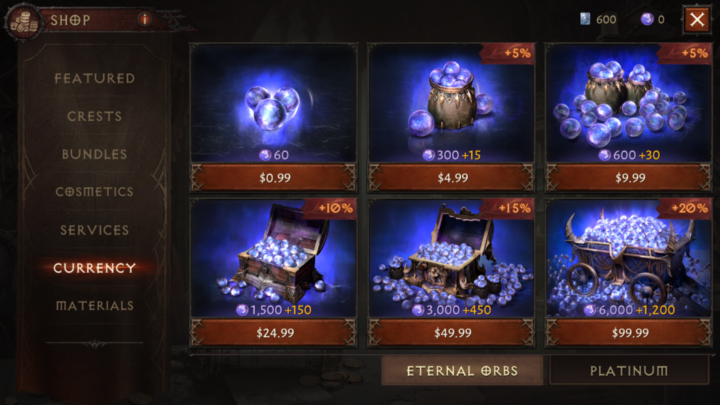
Diablo Immortal is the new mobile Diablo game from Blizzard. Released at the beginning of June, 2022, Diablo Immortal is by all accounts a good mobile game — on the game play front that is. However, the economics of the game have united gamers in outrage as Blizzard has implemented perhaps the most aggressive and borderline predatory microtransaction system in a major gaming title to date.
In addition to the normal skins and cosmetics that you can find in many “Free-to-Play” games Diablo Immortal features a number of digital assets that are purchasable with real life cash that have a material impact on the game. These are:
- Eternal Orbs (purchased with $)
- Platinum (purchased with Eternal Orbs, which are purchased with $)
- Eternal Legendary Crests (purchased with Eternal Orbs, which are purchased with $)
- Legendary Gems (purchased with Platinum, which can be purchased with Eternal Orbs, which can be purchased with $).
If this seems complex it might be because it is. There are so many layers of indirection that it’s hard to believe this isn’t purposefully confusing. To understand how this economy leads to a “Pay-to-Win” outcome we first need to examine some of these currencies and see how they ladder into in-game power.
Eternal Orbs are a premium in game currency that are largely used to purchase Eternal Legendary Crests, but can also be used to purchase Platinum. Both Crests and Platinum are crucial to maxing out the endgame of Diablo Immortal, especially with the aggressive leveling wall that hits around level 30. With Eternal Orbs effectively being your passport to powerful items in Diablo Immortal it is difficult to accept that one of the only ways to obtain the orbs is via direct purchase with cash. Eternal Orbs are excluded from the Daily Rewards and the Battle Pass does not reward players with the orbs. So how much will these thing set you back?
You can buy as little as 60 orbs for a dollar and as many as 7200 orbs for 100 bucks. With your orbs in hand you can then buy Eternal Legendary Crests at 160 orbs a pop and Platinum — as little as 500 Platinum for 50 orbs and as much 50k platinum for for 5000 orbs. If you’re an astute reader you may have noticed that none of the pricing in orbs for either Platinum or Eternal Legendary Crests is perfectly divisible with the number of orbs you can buy — presumably leaving the players with “dust” so they feel compelled to buy more. Not exactly a new strategy from Blizzard here, but a greedy one nonetheless.
The Eternal Legendary Crests are the next layer of the onion here. These are items you purchase with orbs and are part of a class of items, Crests, that increase the drop rate of other important items such as Legendary Gems and Runes. Gems and Runes are, in turn, used to modify equipment and weapons for the endgame. While you do not need Eternal Legendary Crests to farm the gems and runes (there are Crests with lower rarity that do not cost money), using them guarantees you a legendary gem that can be sold at the market should you choose. It’s important to note here that there exists a sort of “vanilla” Legendary Crest that you can buy with Gold (the currency you earn from killing monsters in the game). The difference between this and the Eternal version is Legendary Gems harvested with one of these “vanilla” Legendary Crests are bound to your character and as such you cannot sell them in the market. Additionally, you can only purchase one Legendary Crest per month with gold.
Next up we have Platinum! This is a “semi-premium” currency in that you can technically farm in the game but…alternatively you can just buy it with cash — remember the misdirection here of cash => orbs => platinum. If you don’t feel like draining your wallet further for Platinum then you can sell excess gems and Legendary Gems for platinum or earn it by completing daily quests. The only point of Platinum is to seemingly buy Legendary Gems from the marketplace. Remember that these are the items you use to modify your gear as you get to the endgame state for your character.
We’re in the home stretch now with Legendary Gems. The only way to obtain these without paying is by running Elder Rifts (dungeons) where you have some percentage chance of a Legendary Gem dropping. The Elder Rifts do not require you to modify them with any Crests, however if you want to obtain Legendary Gems and you don’t want to just outright buy them with Platinum then you will need to use Legendary Crests to guarantee a drop of Legendary Gem. The Gems, of course, have grades and the highest grade has about a 1/2000 drop rate even with a Legendary Crest (higher grade = better). So even if you wanted to spend a bunch of money to get the Legendary Gems to get the endgame gear you are far from guaranteed to either 1) get the specific Legendary Gem you might want for your character or 2) get a Legendary Gem with a high grade 😬 THIS is where the gem marketplace comes into play! Gamers who don’t want to deal with all this rigamarole can instead choose to throw platinum into specific Legendary Gems. I’m unsure which is more “efficient” but at least if you outright buy the gems with cash you are getting the one you want.
As we can see the economy of Diablo Immortal is insanely complicated already and this isn’t even exhaustive — we have completely ignored loot boxes and Gold among other things. There is so much opacity that it makes it nearly impossible to accurately evaluate just how much money one would have to dump into the game to max it out. While some internet sleuths have suggested numbers in excess of $100,000 dollars the truth is we’ll likely never really know and this, once again, is by design. While it might technically be possible to grind your way to endgame gear the reality is Blizzard has made doing so nearly impossible. When you consider how the money spent on a premium currency like orbs ultimately funnels into items that have a material impact on gameplay — such as the Legendary Gems — its clear to see that Diablo Immortal’s “Free-to-Play” model is in fact “Pay-to-Win”.
End Step
Diablo Immortal is an extremely illustrative example of borderline predatory microtransactions.Unfortunately, this game is hardly a global outlier. As one of the former founding team members of Twitch pointed out on Twitter, Blizzard isn’t really doing anything new here:
Although mechanically Blizzard isn’t re-inventing the wheel, they are combining different “Free-to-Play” mechanics into one package more ruthlessly and efficiently than is typically seen in Western “Free-to-Play” games. That said, the fact that this level of greed is more common in gaming markets outside the West shouldn’t be used to let Blizzard off the hook. Make no mistake about it, Diablo Immortal is so insidious that it rises to a level of comic book villainy scarcely seen since The Great Recession.
With the majority of industry revenue underpinned by various flavors of the “Free-to-Play” value extraction machine it’s hard to see this sort of monetization strategy going away in the near future…even as gamers continue to push back against games like Diablo Immortal and Star Wars: Battlefront 2. Publishers don’t have to be as brazen as they were in those two instances for this to be a serious, industry wide problem.
All is not lost though. While the gaming community writ large seems to think NFTs are the End Days for gaming as we know it, web3 gaming does present an opportunity to rethink the current economic models, challenge the monopoly on the marketplace that publishers have and usher in a power shift towards actual gamers. How exactly this might look is something we’ll explore in Part Deux. Until then I hope skeptics can keep an open mind. After all, what do you really have to lose?
0xBEW
Thanks to Yunt Capital
Any views expressed in the below are the personal views of the author and should not form the basis for making investment decisions, nor be construed as a recommendation or advice to engage in investment transactions. As always, please do your own research. This is not financial advice. Every strategy is not for everyone. Each investor needs to understand what is right for them.
Meet BEW, a wine collecting web developer who moonlights as an amateur chef. BEW's passion for wine is evident in his vast collection of bottles from all over the world. He also has a great interest in web development and is known for his skills in multiple programming languages such as Python, JavaScript and HTML/CSS. He is able to combine his love for wine and web development by creating visually appealing and user-friendly websites for wineries and wine shops. He is also an amateur chef and loves experimenting in the kitchen and pairing wine with his dishes. In his free time, BEW enjoys 3D glasses and the immersive experience it gives him when watching movies and playing video games.